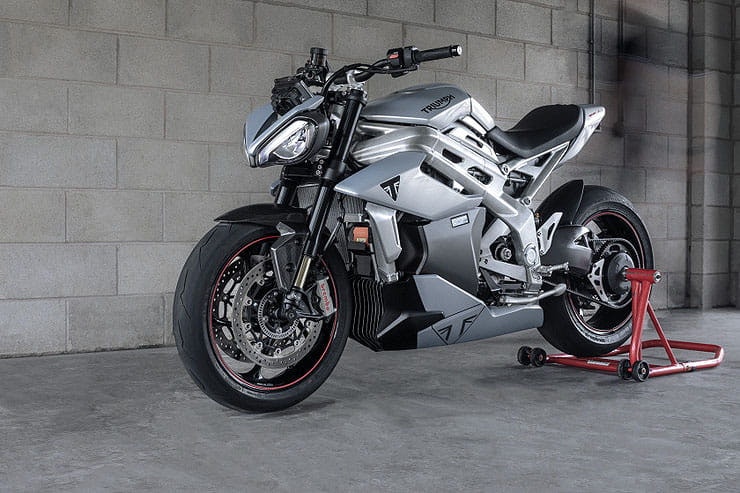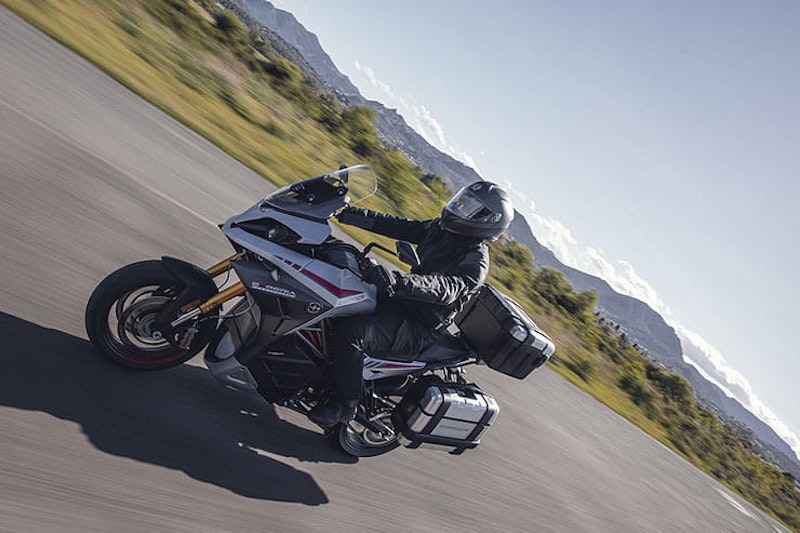Energy price hike makes electric bikes less attractive
By Ben Purvis
Motorcycle Journalist
30.08.2022
You only need to look at the efforts going into projects like Triumph’s TE-1 (above) to see that every major bike maker on the planet is pouring resources into battery-powered bikes as plans to ban combustion engine sales in the future get ever more concrete. But they eyewatering rise in energy prices means that one of the key attractions of electric motorcycles – their low running costs – is in jeopardy of being destroyed.
From October, anyone billed at the price capped rate in the UK will be paying a whopping 52p per kWh for their electricity. That compares to around 18.9p per kWh last year and 28p per kWh under the current cap.
Take a bike like Energica’s new Experia (below) – about as close as today’s electric offerings come to directly replacing petrol bikes in terms of performance and range – and the increase in running costs is stark. At last year’s prices, filling its 22.5kWh battery pack would have cost £4.25 at the capped rate (we’ll ignore charging losses at the moment for simplicity’s sake, but in reality it would cost a bit more as the charging process isn’t 100% efficient). Under the upcoming 52p per kWh cap, that full charge rockets to £11.70, again ignoring charging losses.
Still less than a tank of fuel, you might argue, but bear in mind that the Energica’s full charge will only take you 138 miles under the standard World Motorcycle Test Cycle (WMTC) conditions.
Taking BMW’s ubiquitous R1250GS as a yardstick, the petrol bike would cost £34 to fill its 20-litre tank (at the current £1.70 per litre of unleaded), but at its WMTC-tested fuel consumption of 4.75l/100km (59.5mpg), you’d get 261 miles from a tank. As a direct comparison, that means the GS will get around 7.7 miles per £1, or cost 13p-per-mile, while the Energica would get 11.8 miles per £1, or cost about 8.5p-per-mile.
So, there’s still an advantage to the electric bike, but only a fraction of what it used to be (3p-per-mile at last year’s electricity prices). However, at £27,790 for the Experia compared to £14,340 for a base R1250GS, it’s going to take a lot of miles to claw back the £13,450 price difference between the bikes. In fact, looking at the cost-per-mile figures above – with the Energica 4.5p-per-mile cheaper than the BMW – you’d need to cover around 300,000 miles before you break even.
Of course, there are much cheaper electric bikes, and where the price difference compared to petrol is only a few hundred pounds rather than a few thousand it will take far fewer miles to reach that break-even point.
For some electric bike riders the equation will be skewed in their favour by low-cost night time tariffs aimed at EV owners – some deals as low as 7.5p per kWh during off-peak hours have been available, but they’re disappearing as energy costs rise – or by free or subsidised charging in work car parks, often offered as a perk.
On the flip side of that, riders who can’t charge at home and are instead shackled to using public charging networks will pay more than the capped home tariff. Many pay-per-charge public providers already cost around double what it would cost at home – as much as 69p per kWh – and that could easily rise past the £1-per-kWh mark as we go into 2023.
At 69p per kWh, our imaginary Energica owner will be paying £15.52 for a full charge, equating to more than 11p for each mile of the bike’s 138-mile range. At the £1 per kWh rates that many expect to appear as energy prices rise later this year, a charge would cost £22.50 and the per-mile cost would be 16.3p (more than 3p per mile more than a petrol-powered R1250GS’s fuel cost.)
It’s also worth pointing out that the cost of petrol includes a huge amount of tax. Since it’s made of a fixed, per-litre duty and an additional 20% VAT, its total proportion varies, but at the moment about half the money that you spend on petrol goes to the government. Electricity doesn’t carry that burden, but as more road users switch to electric vehicles, you can be sure that governments will look to recoup the money they’d have previously got in fuel duty.
Of course, all these figures are just a snapshot. Further in the future, as more renewable electricity generation comes online, we can hope that prices will become lower and less volatile. However, alternative options to meet zero carbon transport goals, for instance synthetic or biofuels or even hydrogen power, may start to look increasingly tempting if increases in electricity prices continue.
Share on social media:

